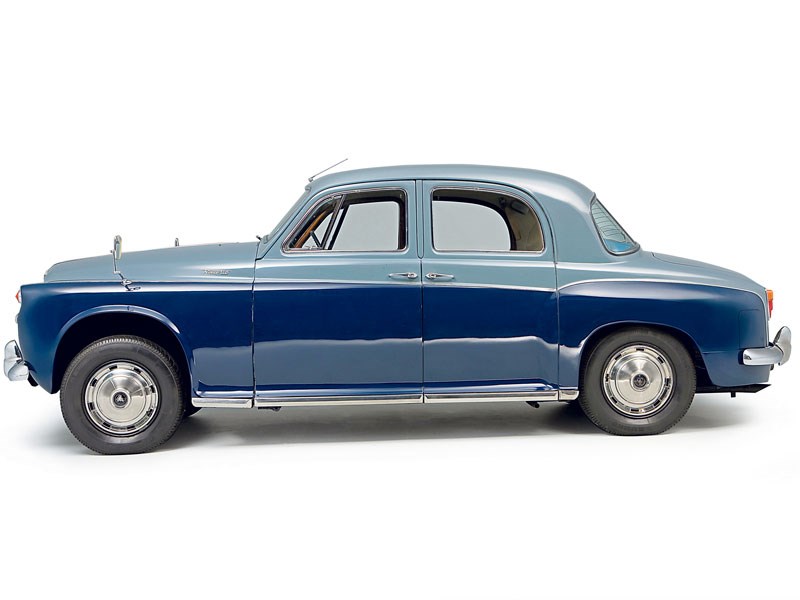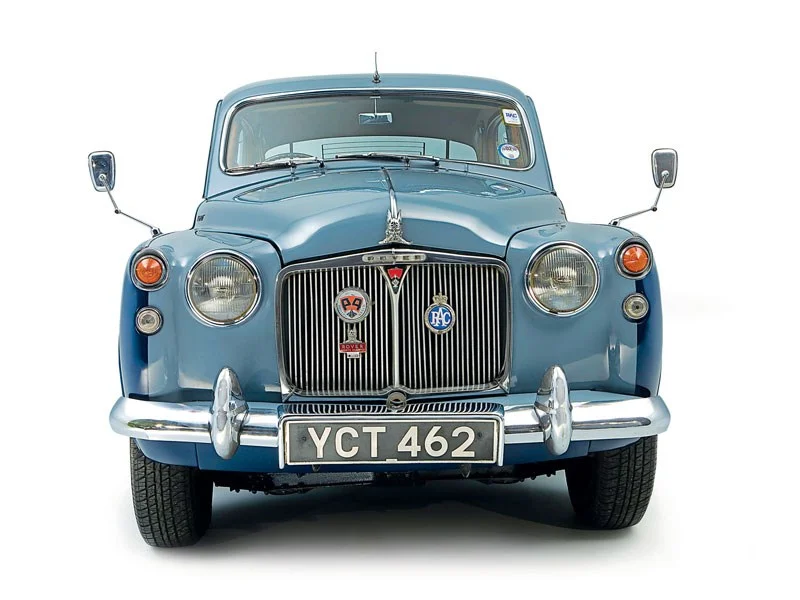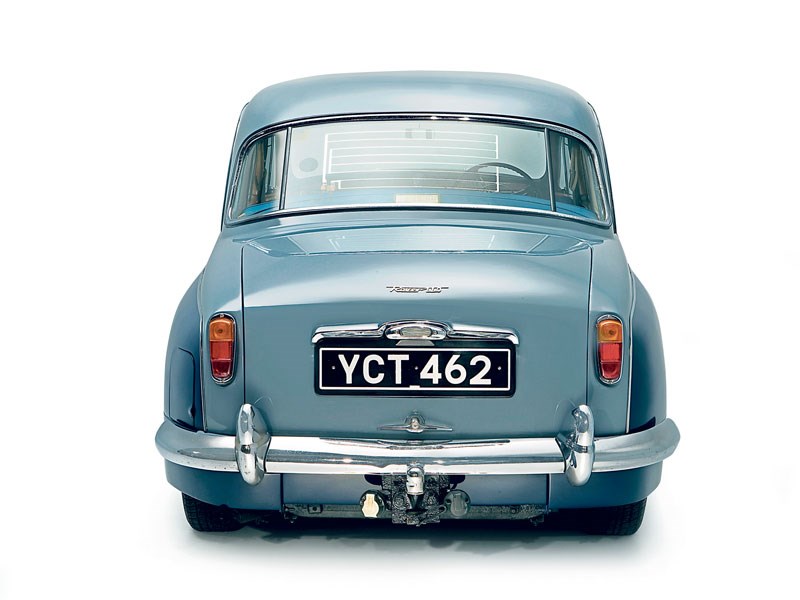
There’s something wonderfully ‘right’ about a good P4. There’s a crisp, ‘engineered’ feel that works well with all the wood and leather, while clambering aboard is an experience, with those suicide rear doors adding excitement for passengers.
The six-cylinder models get all of the glory, but there’s not a lot wrong with the four-cylinder engines – both of which saw use in Land Rovers. While no racing machine, a P4 is easily capable of holding its own on a motorway. The high seating position and enormous steering wheel combine to make you feel king of the road, while the delicious, exposed gear linkage is sheer delight to use. The later servo-assisted brakes give a lot more stopping power, though they still need a fairly good shove.
The handling was never anything to get too excited about, but then this isn’t a car to push hard. If you insist, the nose will soon push wide and unsettling bodyroll sets ins. That said, avoid over-harsh cornering efforts and the P4 can barrel along a twisty B-road at a fair speed. The steering is direct and should feel very accurate, just don’t expect to hurtle around roundabouts like a Mini.
Better to think back to times gone by, when rushing around simply wasn’t the done thing. Settle back for the cruise and the comfort and refinement will take your mind away from such worries as time. Noise levels are surprisingly low, with a delicious first-gear whine from the transmission just adding to the joy of it all.
The 75, 90, 95, 100 and 110 are all six-cylinder powered, with power ranging from 72 to 123bhp. The 60 and 80 are the four-cylinder options, and while they’re down on power, they feel a touch lighter in the steering to compensate.
VITAL STATISTICS
Rover 100
Engine 2625cc/6-cyl/OHV/Bosch injection
Power (bhp@rpm) 104bhp@4750rpm
Torque (lb ft@rpm) 138lb ft@1500rpm
Top speed 95mph
0-60mph 18sec
Consumption 20mpg
Gearbox 4-spd manual overdrive
WHAT TO LOOK FOR
BODYWORK & CHASSIS
Bodywork checks are absolutely key, as restoration can quickly get prohibitively expensive. Repair sections are available for the indicator area, and around the headlamps. Glassfibre wings are available, but purists aren’t keen. Check all the brightwork carefully as some of it is Mazak, which pits badly with age.
Sills are a common rot spot and it can spread into the floors. Doors are usually aluminium, though they were steel on later cars. Both can oxidise. A-posts can corrode, and the door will then drop as it is opened. Rot is also possible at the base of the front wing. Interiors are plush and very expensive to overhaul. Water ingress is an issue, thanks to tired window seals. If it has leaked in, it often pools in the passenger footwell. Well-cared for leather should be soft and pliable to the touch.
Corrosion can strike the chassis, especially where it rises up above the rear axle. It’s very difficult to check with the car at ground level, so you either need to remove the rear wheels, or talk a garage into letting you borrow their hoist. Repairs are possible, but need to be done well to prevent further trouble. Rot affects the rear wings, especially the lower edges and across the rear valance. Open the boot and check again for water ingress and crunchiness. Be very wary if the boot will not stay open. It is cantilevered, but the mounts can suffer from rot.
ENGINE
Various engines were fitted, with six-cylinders most popular. Rebuild parts can be very expensive, even for the four-cylinder engine. If regular oil changes are not adhered to, camshaft wear can occur and replacement is the only cure. If clouds of blue smoke appear after a long period idling, head work will be needed. Low oil pressure suggests a general overhaul is needed and may cause blue smoke to appear continuously. Exhaust manifolds can crack, so listen out for a chuffing noise. Overheating can be an issue with a neglected engine too, as ancient coolant can silt up the radiator and/or block.
RUNNING GEAR
The gearbox is generally robust, but removing it is a pain as the interior needs to be stripped to allow access. Watch for failing synchromesh, especially on second – thought this gear was only so equipped from 1952. First gear has no synchromesh and will always whine. If overdrive was fitted, the quirky freewheel was not. The overdrive won’t engage below 50mph and should, in theory, kick-down from overdrive if the throttle is floored. The two-pedal Roverdrive can be troublesome if parts are needed, though it’s quite reliable. Only 3540 were made with this ’box.
BRAKES
Many P4s have now escaped the need for an MoT (cars built after 1960 still need one), so be vigilant. Rot can strike around the steering box idler mountings, as well as the front outriggers. Wear in the suspension top bush will cause uneven tyre wear and clonks, while kingpins can naturally wear – these should be lubricated with heavy oil, not grease. The steering should not be vague. Radial tyres can make the steering exceedingly heavy, but offer benefits once under way, though supply is tricky at the moment.
Rear axles are very hardy and rarely give trouble. Do make sure the handbrake works though. The mechanism often seizes up and people assume they were always rubbish. They weren’t. Incidentally, check the condition of the hubcaps. Replacements are not cheap. The rear leaf springs can sag with age. Retempering or replacement are the only cure. The nose-high stance isn’t helped by front springs actually getting harder with age. Have a quick glance at the brake back plates if you can. If the outer driveshaft seals have worn, the brakes can get contaminated.
OUR VERDICT
There is a surprisingly wide variety in the P4 range. The six-cylinder 100 is most abundant, and remains a great buy. Don’t rule out an 80 though. Engine spares certainly aren’t an issue, thanks to the use in Land Rovers until the 1980s. Whichever you opt for, the P4 remains a wonderful driver’s classic.


